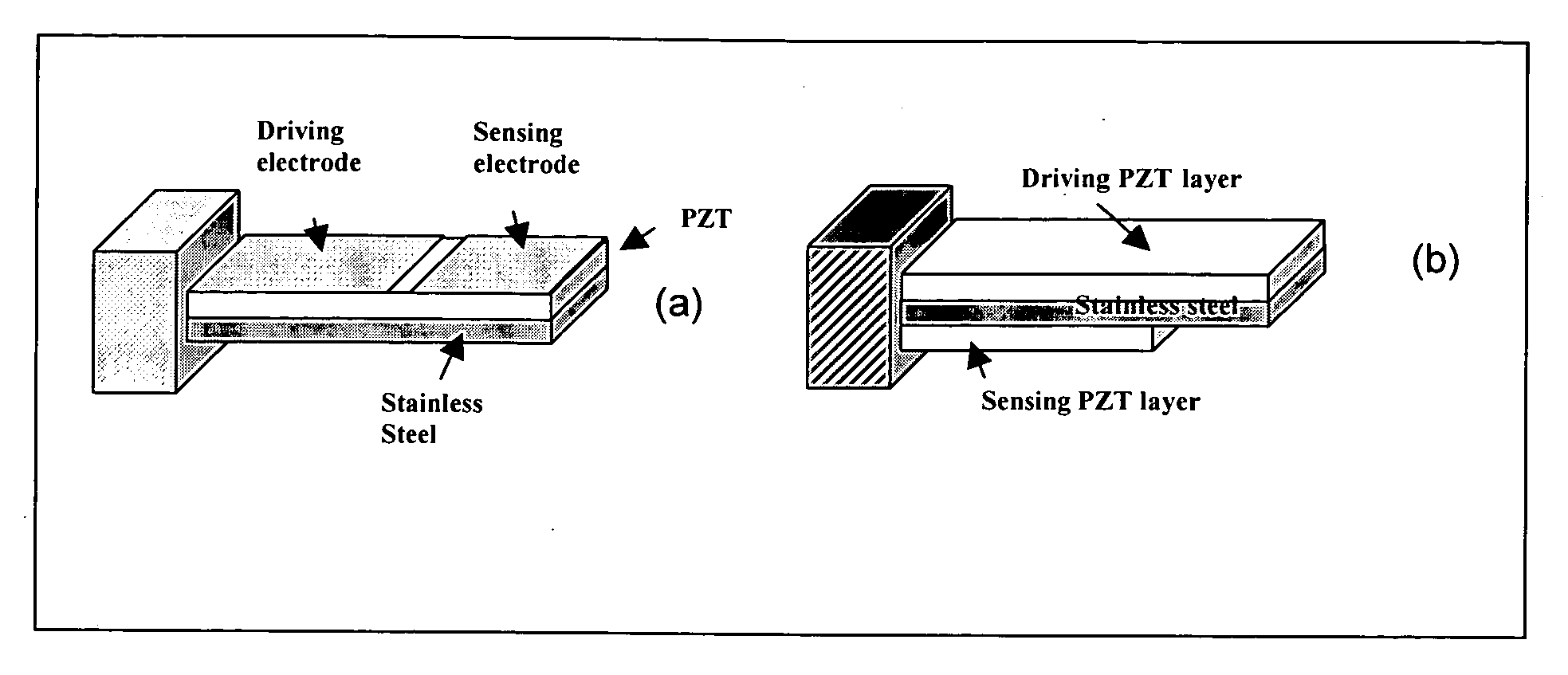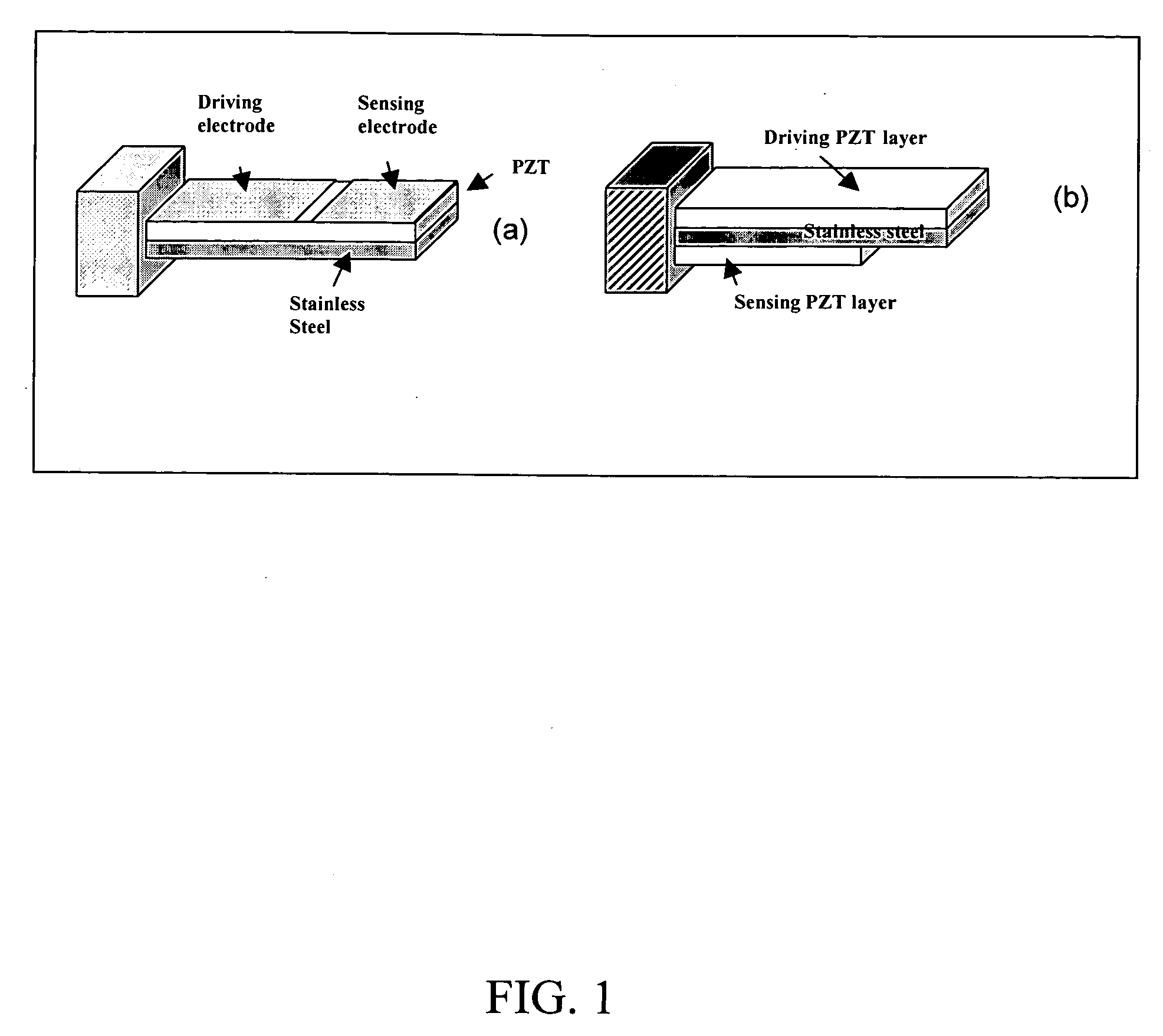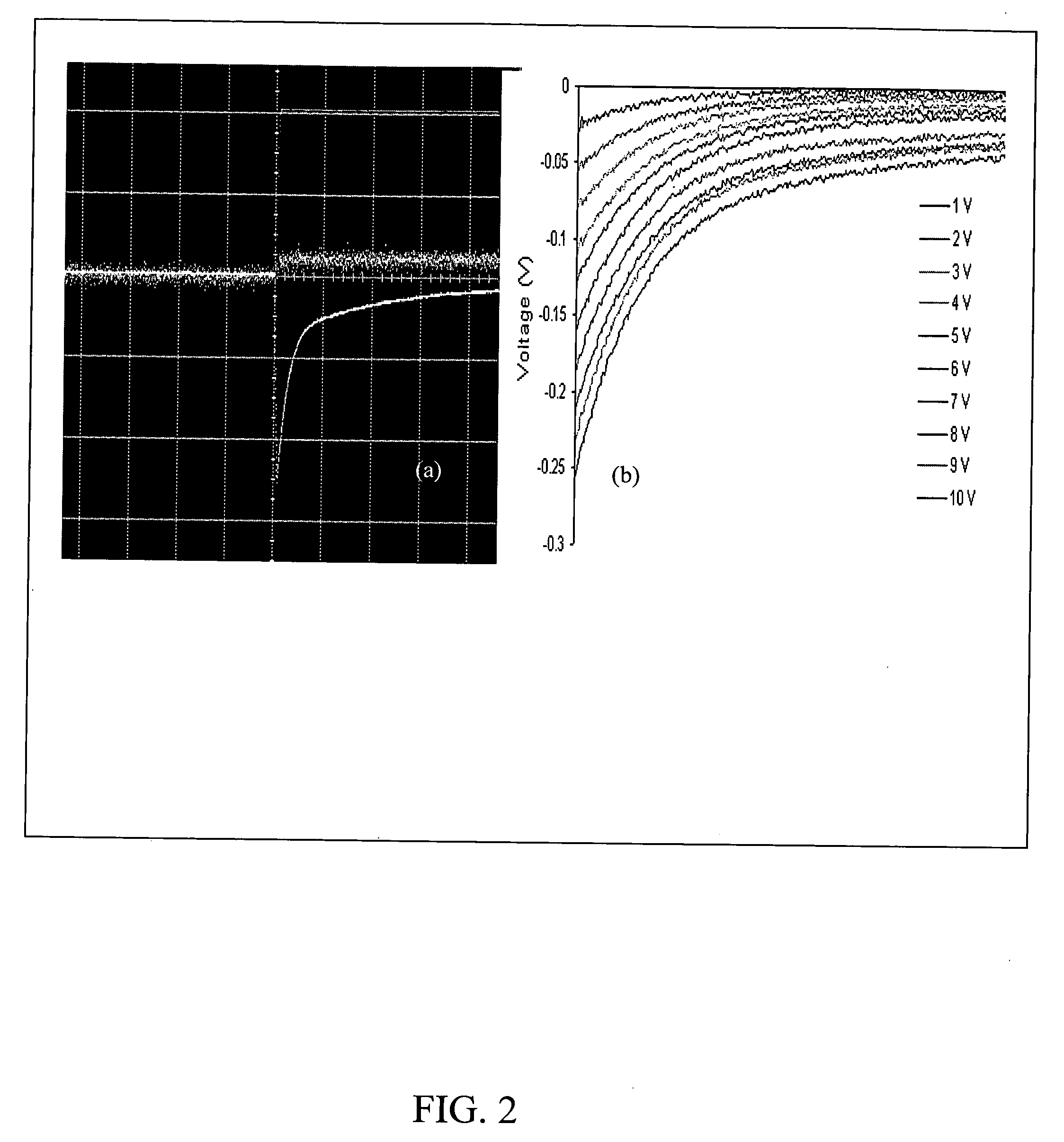All electric piezoelectric finger sensor (PEFS) for soft material stiffness measurement
a piezoelectric sensor and soft material technology, applied in the field of piezoelectric sensors, can solve the problems of high false positive rate, destructive mechanical testing of typical tissue/soft material, and none of these techniques can probe the interface properties of tumors
- Summary
- Abstract
- Description
- Claims
- Application Information
AI Technical Summary
Benefits of technology
Problems solved by technology
Method used
Image
Examples
example 1
[0043]FIG. 2(a) shows the displacement signal captured by the sensing PZT layer and by the laser displacement meter when a 10V step potential was applied to the unimorph cantilever. FIG. 2(a) shows a typical all-electrical measurement as displayed on an oscilloscope. The applied voltage (line 1), at t=0, indicates the applied voltage was turned on. Line 2 was the voltage output from the laser displacement meter for direct displacement measurements and line 3 was the induced voltage measured at the sensing PZT layer. In FIG. 2(a) the induced voltage was negative. The peak of the induced voltage was therefore at minimum near t=0. The induced voltage decayed with time due to the fact that the PZT layer was not perfectly insulating. The charge generated at the PZT surface by the cantilever bending dissipated over time. As can be seen from FIG. 2(a), the induced-voltage measurement was more sensitive than that generated by the commercial displacement meter (Keynce™ LC2450 displacemeter (...
example 2
Flat-Punch Indentation Compression Test
[0046] A flat-punch indentation compression test is a test whereby the cantilever tip is pressed on the sample surface and the cantilever contact area is much smaller than the sample surface area. This test simulates an in vivo measurement.
[0047]FIG. 4(a) is a representation of an indentation compression test on a model soft tissue using a PEFS with a sensing PZT layer, and FIG. 4(b) is a schematic of the compression indentation test. In the flat-punch indentation compression tests, the contact area, A, which was much smaller than the sample surface, was defined by gluing a thin plastic sheet of a known area on the underside of the cantilever as schematically shown in the setup depicted in FIG. 4(b). Using a traditional Hertzian indentation analysis one can relate load, displacement, contact area, and the mechanical properties of the tested material.17 When applying a voltage to the top, driving PZT layer, it generated a force, F, and caused ...
example 3
Regular Compression Test
[0048] A regular compression test describes a condition where a cantilever is pressed on the sample surface and the contact area is the same as the sample surface area. A schematic of a regular compression test is shown in FIG. 5(a) where the contact area is the same as the surface area. FIG. 5(b) is a schematic of the deformation of a sample in a regular compression test under an applied voltage, V. In a regular compression test, the elastic modulus is obtained by using Ec=K(d0-δ)hA δ ,(3)
wherein h is the height of the sample, d0 the “free” displacement of the cantilever at voltage V, δ the displacement with the sample, K the spring constant of the cantilever and Ec is the elastic modulus measured by the regular compression test. For comparison, the same model tissue sample was tested using both the indentation compression and regular compression test conditions (the left-hand set of data and setup in FIG. 6(a) for regular compression and the right-h...
PUM
| Property | Measurement | Unit |
|---|---|---|
| diameter | aaaaa | aaaaa |
| diameter | aaaaa | aaaaa |
| diameter | aaaaa | aaaaa |
Abstract
Description
Claims
Application Information
 Login to View More
Login to View More - R&D
- Intellectual Property
- Life Sciences
- Materials
- Tech Scout
- Unparalleled Data Quality
- Higher Quality Content
- 60% Fewer Hallucinations
Browse by: Latest US Patents, China's latest patents, Technical Efficacy Thesaurus, Application Domain, Technology Topic, Popular Technical Reports.
© 2025 PatSnap. All rights reserved.Legal|Privacy policy|Modern Slavery Act Transparency Statement|Sitemap|About US| Contact US: help@patsnap.com



